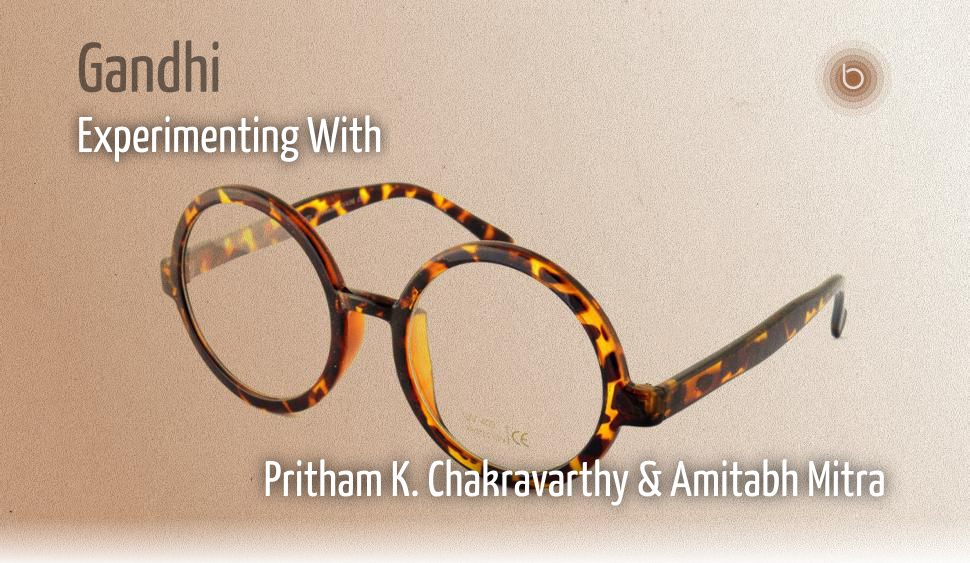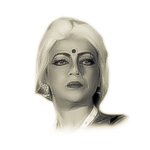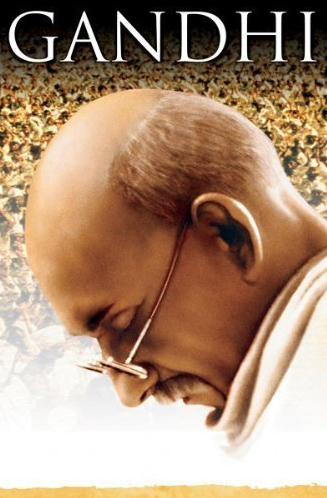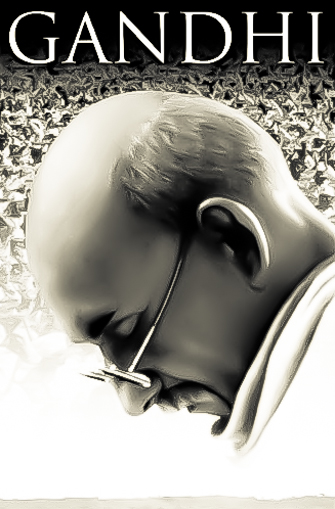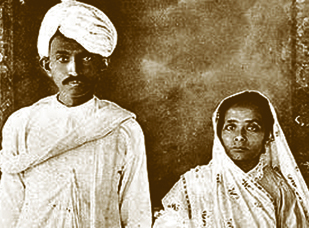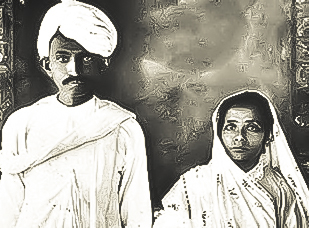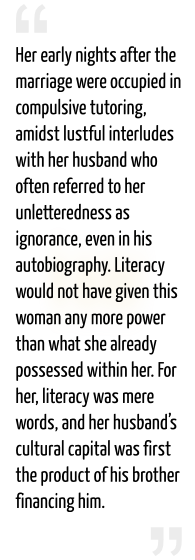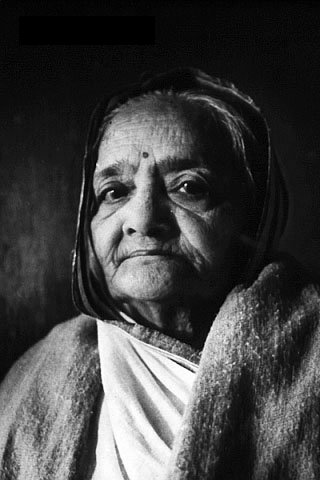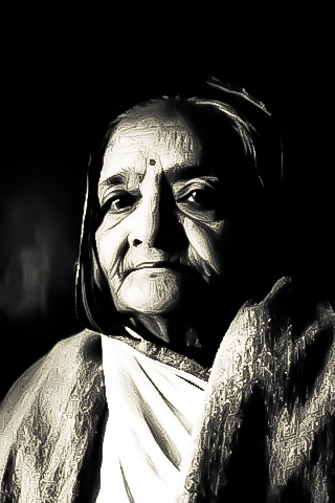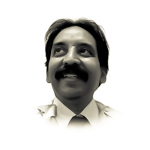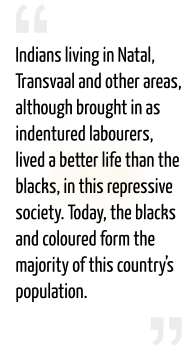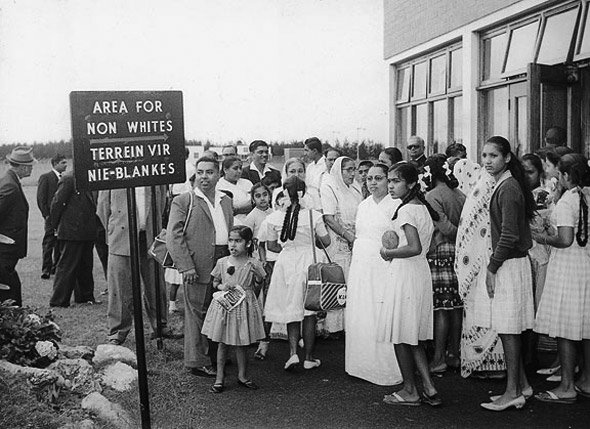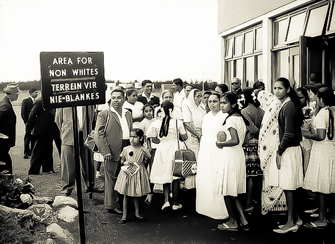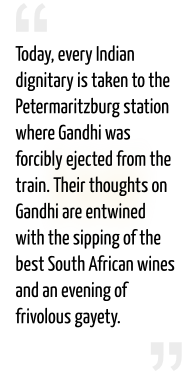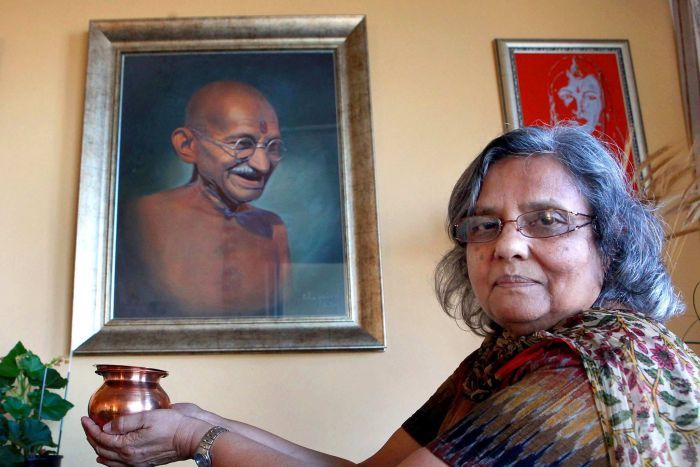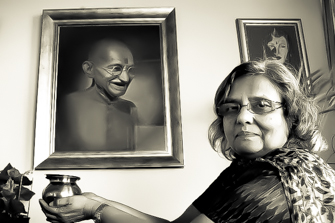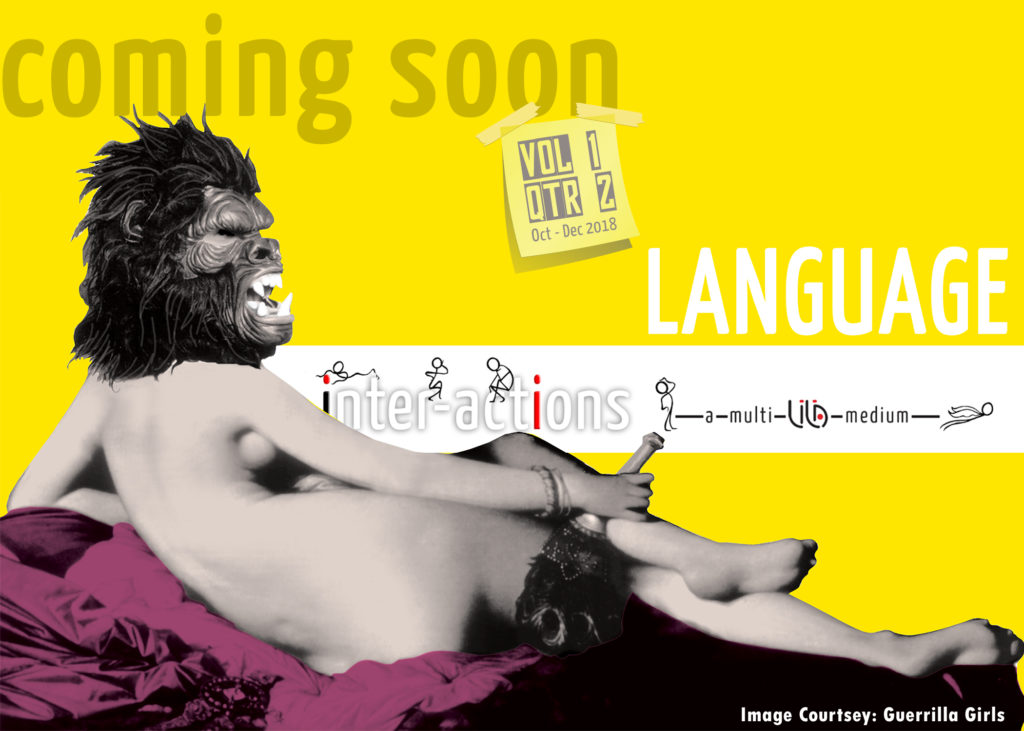
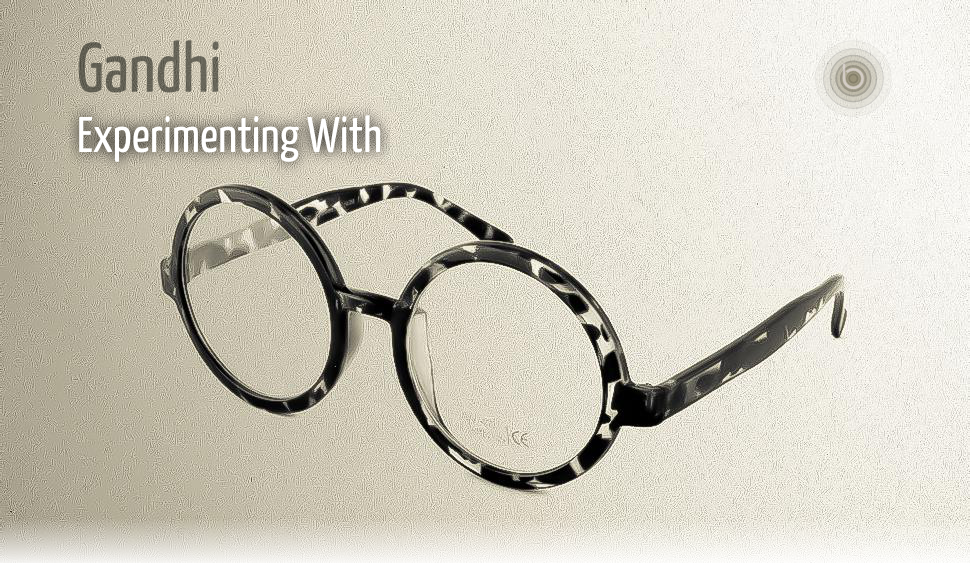
3 October 2014Can the lived reality of a particular historical figure move societies across time? That is the challenge that Gandhi poses for India. Regardless of our discomfort or disagreement with the choices made by MKG, he is remarkable for the scale of his surrender to the principle of experimentation. At the heart of the idea-action of experimentation is experiri, the desire to try, to assess the validity of ideals through their enactment. And, sixty-six years later, Gandhi remains relevant because hardly anyone has been able – as of yet – to undertake as comprehensively the path of his belief in experimentation. To transform, in other words, the customary rituals, celebrations and other acts of remembrance of this season, into cyclical reminders of the possibility of a deeper individual engagement. Gandhi provokes controversies about his choices, but his method, his approach, his attitude invite us to question, for ourselves, those very choices. The times are asking for us to experiment with Gandhi, still, and Gandhi continues to ask us to experiment with everything. Kicking off our new series of dialogues on belief, this week’s exchange on LILA Inter-actions presents two personal responses to the legacy left by Gandhi. Pritham K. Chakravarthy shifts the focus to the other Gandhi, Kasturba, to assess how visions and beliefs can also provoke suffering to the nearest, when the self remains a hindrance on the road. And Amitabh Mitra reflects on the other reasons that may have engendered the slow disappearance of Gandhi’s sparkle, in his adoptive land of South Africa. Hold the cursor on the illustrations to display animations. |
||||||||||||||||||
Woes of Being Mrs. MahatmaPritham K. Chakravarthy |
19 July 2014Amitabh Mitra |
|||||||||||||||||
Requested file could not be found (error code 404). Verify the file URL specified in the shortcode. |
Listen |
Listen |
Requested file could not be found (error code 404). Verify the file URL specified in the shortcode. |
|||||||||||||||
|
“I cannot imagine Sita even wasting a single moment on pleasing Rama by physical charms… look at Ba!” “I have a fear that the modern girl loves to be Juliet to half-a-dozen Romeos. She loves adventures… The non-violent way is not for such girls!” These are just but a few of the platitudes penned by the Mahatma on women, as found in his archives. Attenborough’s Gandhi: an international hit, Sir. Richard Attenborough’s magnum-opus Gandhi (1982) opens with the Mahatma being shot and the largest funeral in the history of the world; leaders, lovers, and devotees walking along, to the military drum beat. As the multilingual radio voices across the world mourn the death, they slowly fade out to let the BBC speak, in English: The object of this awesome tribute… died as he willed… a private man, with no wealth, without property, without official title or office; Mahatma Gandhi is not the commander of armies or a ruler of vast land. He could not boast of any scientific achievements or artistic gift. Yet; men, governments, dignitaries from all over the world have joined hands today to pay homage to this little brown man with a loin cloth, who led his country to freedom. In the words of Gen. G. Marshall, then General Secretary of the US: Mahatma Gandhi has become the spokesman of all conscience of all mankind. He was a man who made humility and simple truth more powerful than an empire. And Albert Einstein added that ‘never will the world believe that such a person of flesh and blood walked upon this earth…’
Voice fades out and there is a sharp cut to an extreme long shot of a train speeding through pastures in a night in South Africa, 1893. This is the scene where Mohandas K. Gandhi is thrown out off a first-class compartment at the Pietermaritzburg Station, along with his luggage and the bible he was reading. His fault: being a ‘smart bloody fakir’. 12 minutes down the film. Khan, the trader and Gandhi march into the police-surrounded public ground to burn their citizen passes. Khan congratulates the handful of Indian women for having the courage to participate, wherein Gandhi intervenes, “No. I asked my wife to gather them.” This is the introduction to Kasturba, aka Ba; clad in her Parsi styled sari with a brooch to hold the pallu to her long-sleeved blouse. All she has to do in this scene is to bury her head on the grabbing white policeman’s shoulder and weep, while her husband is being thrashed as he continues to drop the passes into the bonfire with a trembling hand. Even then, we do not know her by her name; we only recognise her because of our collective memory. This melodramatic introduction does injustice to a strong woman’s contribution to this nation’s history; a remarkable contribution, indeed, despite her strange, quirky husband’s behaviours. It was not just Sir. Richard: even history has paid scant attention to this woman who should rightfully be called the Mother of the Nation – Kasturba Gandhi. But, here lies another problem. Do we want a paternal/maternal figure to head this nation at all? Should we not, as well, redefine ‘nation’ as a construct altogether? Those thoughts of mine come from very little external reference: M. K. Gandhi’s My Experiments with Truth, Gandhi (1982), directed by Sir. Richard Attenborough, Gandhi, A Manga Biography, by Kazuki Ebine, Gandhi — Naked Ambition, by Jad Adams, The Untold Story: Kasturba, Wife of Mahatma, by Arun & Sunandha Gandhi and a tiny booklet by Mythili Sivaraman, Raising Questions: Kasturba, Mahatma’s Wife. Those facts are known. What I write comes from my own angst about the huge burden borne by this wonderful woman – and a whole world of women – who went completely unrecognised. In 2007, during my first visit to perform at Natarani, Ahmadabad, Mallika Sarabhai arranged a visit to Sabarmati Ashram. Since then, she has become the one woman I am obsessed with. Throughout their life,
Engaged at the age of six and wedded to a boy barely a few months younger to her, Kasturba had to take on several roles; sometimes out of her own will, and most of them, acknowledged only posthumously. Her early nights after the marriage were occupied in compulsive tutoring, amidst lustful interludes with her husband who often referred to her unletteredness as ignorance, even in his autobiography. Literacy would not have given this woman any more power than what she already possessed within her. For her, literacy was mere words, and her husband’s cultural capital was first the product of his brother financing him. Pregnant with her first child, and while her father-in-law lay in his deathbed, her young, randy husband forced her into a sexual union. The newborn child died three days later. Instead of mourning along with his young wife, who had just lost her first-born, the husband chose to blame himself for his erotic impulse, as his father was dying. This was followed with a weird sense of guilt that would skew this woman’s marital life forever. After bearing him four more sons – two in India and two later in South Africa, when she was all but 39 – Kasturba saw her husband swear off sex and move over to a very bizarre definition of Brahmacharya. In his autobiography, he claims that she willingly accepted to live an asexual life – odd statement, coming from the husband who just two decades before banned her from going out of the house, speaking to strangers or even responding to him.
Little did that dither this amazing woman. She went on to raise her sons, stand up for her rights as a wife married under Hindu rites in a land that refused to accept any other than a church blessed wedding as ‘real’, face prison several times, forced to survive on fruits and salad, embrace poverty, take care of plague afflicted patients, fight for their hygiene, bear with her boorish husband when he threw out her eldest son, Harilal, from her home, and bade the younger son, Manilal, to stay back in South Africa, to run his Phoenix Farm – all along remaining silent, affectionate, caring and courageous. The radiant peace of a courageous woman Much has been written about her reluctance to clean another man’s faeces willingly, or about her visit to Puri Jaganath Temple, against her husband’s wish. For all of these and several other mistakes, she was punished with starvation (fast is but a euphemism for being denied food), or threatened to be sent back to her natal home. No one asked how many diapers Mahatma learnt to change or clean. There have been discussions aplenty of Mahatma’s eerie sexual experiments. One has record of those only after Ba’s demise. There is no evidence as to whether such practices already took place, even while she was alive, sleeping in the next room, on a single bed for twenty three years. One can only hope not! So, as the ‘nation’ celebrates this October 2nd, shall we take the time to remember Kasturba Gandhi? |
19 July 2014, a date which I believe should have been remembered and commemorated in South Africa, if not in India. This date takes us back a full hundred years, when Gandhi left South Africa for his country. He ignited a revolution among Indians living in South Africa, demanding their rights to live with human dignity in a climate of non-violent acquisition.
Millions of blacks and coloureds who form the majority of South Africa had never heard the lone voice, and they still don’t. I cannot blame them. Repression was after all worst towards them. Indians living in Natal, Transvaal and other areas, although brought in as indentured labourers, lived a better life than the blacks, in this repressive society. Today, the blacks and coloured form the majority of this country’s population. Indians, too, paid the price of the Apartheid In India, till 1992, the common man on the street, the school going child and even the country’s elite intelligentsia never discussed South Africa’s killing fields, even though we already knew about the genocide in Bangladesh, the Pakistani aggression and the 62 war with China. India used its veto at the United Nations against apartheid South Africa, but that may have been on the behest of the former Soviet Union. Already, the rapport between our two cultures was obstructed. I reached South Africa in 1992, when the apartheid was still in place. Like any other non-white, I needed a pass to come to the white areas from the Bantustan republic of Transkei, where I served as an Orthopaedic Surgeon with black populations. I came to South Africa from Zimbabwe on a one way ticket to Transkei, I soon found myself isolated at the Johannesburg airport and bundled on to a flight to Transkei. The Gwalior sun had burnt my skin to a much darker proportion than the average blacks of South Africa. With me, from Gwalior, I had brought a bundle of hopes and this great burden of Gandhi which happens to be part of our growing up, indispensable to all Indians whether one likes it or not. Gandhi, as an icon, is celebrated with birthdays, naming of streets, roads and institutions. Every word he spoke or wrote is researched to expand in-depth meanings. It is this fashion that contemporary India celebrates, and Gandhi is further embedded to every expatriate Indian reaching foreign shores. It would be utterly insulting if I proclaimed that I finally rid myself of the baggage of Gandhian policies and thoughts. As a Gwalior boy who played around with thoughts, words and colors, being perpetually in love with some girl or the other, I was finding the relevance of Gandhi in political subversion for a hallucinatory peace in India and overseas, rather far fetched. But the Gandhian philosophy, far encompassing and iconoclastic, did and does seem, in many ways, to continue shaping our beliefs, just like for any other Indians who stayed back in India. Anand Sharma, once a Youth Congress leader of the Congress (I), and later a minister in Manmohan Singh’s cabinet, had told me in no uncertain terms then, that I would be a misfit in this party I had planned on joining, considering my Bengali background and Gwalior. The Gandhian ambassadors in the Congress Party were taken over by arrogance, and it still remains their hallmark.
Sometimes around 1982, Saeed Naqvi was the first Indian journalist to expose the farce of South Africa. I remember reading his article in the Times of India, where he mentioned in detail the atrocities of the white apartheid government, the high life behind high walls and barbed wire of white supremacists’ homes and the poorest of poor blacks who lived longing for just another day. Gandhi had probably never heard of the black Bantustans of South Africa. Today, every Indian dignitary is taken to the Pietermaritzburg station where Gandhi was forcibly ejected from the train. Their thoughts on Gandhi are entwined with the sipping of the best South African wines and an evening of frivolous gaiety. I still continue to wonder how Saeed Naqvi could enter South Africa during those tiring times. But even his article did not make any Indian sit up and think, least of all the intellectual elite who prided over endless cups of coffee in fusing Gandhi with Trotsky. Professor Christiaan Barnard is a pioneering heart transplant surgeon but few know that he was the face of white South Africa in the international arena where he tried his best in decriminalising apartheid, joining medicine at the same time. In his book, South Africa : Sharp Dissection published by Tafelberg in 1977, he writes, There are thousands of Indians in South Africa who have shown that despite their lack of full political rights, they have the job and business opportunities to make a success of life and earn a more than comfortable place in the South African sun. As I explained earlier, they themselves decided that they are better off in South Africa than in India. Considerations such as these, however, seem to have no place in the politics of hypocrisy as practiced by Third World leaders such as Mrs. Gandhi. There is also the indisputable fact that the social, economic and political climate in India is far more utopian. After democracy came, I had the pleasure of meeting Professor Christian Barnard a few years later, in Colombo, where he was chairing an international congress. I was a non-white representing South Africa there. He embraced me. Ela Gandhi, heir of Gandhi’s philosophy in South Africa Gandhi is best remembered to Indians in Natal and to the rest of South Africans who cared to peep into the history of the struggle against apartheid by his grand daughter, Ela Gandhi. An activist and a former Member of Parliament, she continues spreading Gandhi’s ideals through the Mahatma Gandhi Development Trust and the Mahatma Gandhi Salt March Committee. She wrote the Foreword to a Protest Poetry book I edited. Let me quote a few lines from there, which beautifully summarise the present South Africa: Reading the poems one begins to ask questions : 17 years down the road of democracy, what is it that is uppermost in our minds? Where are we heading to? Will there ever be satisfaction for all in a country so diverse, so economically unequal and so rapidly growing. In my editorial of this book, Unbreaking the Rainbow, Voices of Protest from New South Africa, I tried to answer in my own words: What lies within these pages is difficult to fathom; desperation invents sheer acuity in countering untruths, the conscious nerve screams to be told. As humans devoid of borders, each of us is related to the silence that joins us, its heady aroma reminding us that suffering is not crystalline in velvet lined boxes; it remains as innumerable tiny pieces pricking our conscience at all odd moments. I believe that this reflection would stay incomplete without mentioning the contribution for South Africa of Gopalkrishna Gandhi, grandson of Mahatma Gandhi and High Commissioner of India post democracy, in 1996. I had the pleasure of being with him as an Old Africa Hand – a very long term foreigner, involved linguistically, culturally, and in my case politically, as I was associated with the African National Congress from the eighties, assisting Mosie Moola, the Chief Representative of the African National Congress in Delhi. I especially remember an incident during a press conference, when a white press interviewer asked, “Mr. Gandhi, now, what do you think South Africa has to learn from India, and which message would you give to our newly elected politicians?” Pat came the answer, “South Africa must now learn to look after its millions of citizens, irrespective of colour and creed, it must look after legal and illegal migrants who have escaped war and Complex Humanitarian Emergencies. It must look after all with equal responsibility.”. Till date, he remains the only diplomat from India who toured extensively the whole country, went to various black and coloured townships and interacted with the poorest of the poor, reaching out to them with open arms devoid of any security and protocol. As an Indian South African, I remain confused as to the Mahatmas’s relevance in contemporary South Africa and its neighbouring countries. Violence and trauma still have a political reason in Africa, where peace can only be countered and established by force. Nelson Mandela declared Gandhi as his political guru, but even with him an unbreakable border seems to appear at some point in the application of this philosophy. And perhaps, these are the words with which I should conclude: I followed the Gandhian strategy for as long as I could, but then there came a point in our struggle when the brute force of the oppressor could no longer be countered through passive resistance alone. We founded Umkhonto we Sizwe and added a military dimension to our struggle. Even then, we chose sabotage because it did not involve the loss of life, and it offered the best hope for future race relations. Militant action became part of the African agenda officially supported by the Organization of African Unity (O.A.U.), following my address to the Pan-African Freedom Movement of East and Central Africa (PAFMECA) in 1962, in which I stated, “Force is the only language the imperialists can hear, and no country became free without some sort of violence.” |
|||||||||||||||||
|
Pritham K. Chakravarthy is a theater artist based in Hyderabad. Through a career spanning three decades, she has been performing, writing, translating, filming and documenting. She is currently teaching acting, dramaturgy and film history at the Ramanaidu Film School, Hyderabad. She is also acclaimed for her English translations of a number of Tamil pulp fiction titles, thus contributing to the recent revival of the genre.
|
Amitabh Mitra is a poet, artist and a medical doctor based in East London, South Africa. He is the Head of the Trauma and Emergency Medicine Department of a tertiary hospital complex in Mdantsane, the second biggest black township after Soweto. Recently, the Department of Arts and Culture in association with Oxfam honoured him for his contribution and long standing devotion to the people of Mdantsane.
|
|||||||||||||||||
Disclaimers: The opinions expressed by the writers are their own. They do not represent their institutions’ view.
LILA Inter-actions will not be responsible for the views presented.
The images and the videos used are only intended to provide multiple perspectives on the fields under discussion.
Images and videos courtesy: eBay | IMDB | Caravan Alive | Wikipedia | Tamil Culture | ABC
Voice courtesy: Samuel Buchoul
Share this debate… |
… follow LILA… |
||||
